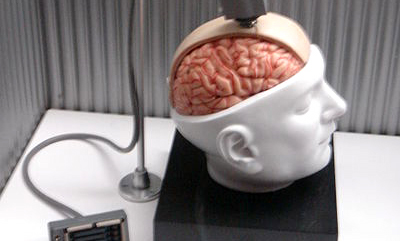
Based on societal trends and extensive study, technology giant IBM has predicted that in the near future, machines will read minds.
IBM expects to see the fruits of its research emerge by at least 2017. In its yearly assessment of upcoming innovative technology, IBM noted the significance of such a development. “From Houdini to Skywalker to X-Men,” they said, “Mind reading has merely been wishful thinking for science fiction fans for decades. But their wish may soon come true.
“IBM scientists are among those who are researching how to link your brain to your devices, such as a computer or a smartphone.”
They gave examples, including the idea of calling someone up by simply thinking it, or willing a cursor to move across a computer screen.
Current potential precursors to this technology already exist.
A project called BrainGate – a brain implant system developed by biotech company Cyberkinetics, was created to aid those who have lost control of bodily functions – like limbs, for example. A computer chip implanted in the head monitors brain activity in the person, and converts their intentions into computer commands. This is a strong example of a direct link between mind and technology.
As research in this area continues, IBM depicts a future in which retina scans or facial recognition will replace passwords for social networks; where “you will be able to walk up to an ATM machine to securely withdraw money by simply speaking your name, or looking into a tiny sensor that can recognize the unique patterns in the retina of your eye,” as IBM suggested.
“Or by doing the same,” they offered, “You can check your account balance on your mobile phone or tablet.”
They also predicted technology could produce electrical power via any type of movement – be it walking, bike riding, or non-human movement, like water flowing through the pipes of homes.
In an age when much science fiction slowly becomes fringe science, and then eventually becomes accepted science, one might recall one of the three laws of sci-fi novelist Arthur C. Clarke: “Any sufficiently advanced technology is indistinguishable from magic.” With that being said, this potential development is quite non-magical, and very much planted firmly in reality, as scientists are beginning to observe.
As a report by Mashable explained, “This isn’t telepathy, so those hoping to get a real-time stream of thoughts from an individual had best look to shows like Heroes or Babylon 5.” What IBM envisions is quite different, they said. The technology itself would be based on a simple brain-machine interface (BMI), which can detect different types of brainwaves and tell a computer to respond accordingly.
The announcement by IBM was part of their “5 in 5 initiative,” which is a forecast of five innovations that will help transform aspects of modern life within the next five years. The overall assessment includes and calculates not only the availability and effectiveness of such technology, but “the likelihood of its large-scale adoption.”
Photo: “A dummy unit depicting the design of a BrainGate interface.” Paul Wicks/Wikipedia










